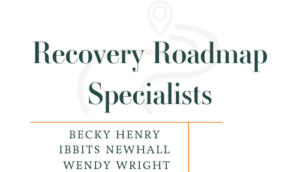 Learning to live in the new reality of having a child with an eating disorder is a process of acceptance that takes a while. And doing that in the middle of a worldwide pandemic adds extra layers of complications and distress to your already mile high cake of chaos. (Couldn’t resist the food metaphor).
Learning to live in the new reality of having a child with an eating disorder is a process of acceptance that takes a while. And doing that in the middle of a worldwide pandemic adds extra layers of complications and distress to your already mile high cake of chaos. (Couldn’t resist the food metaphor).
Regardless of which eating disorder/s your loved one has, you’re going to see a lot of behaviors you’ve not seen in your child before and frankly, they scare you. This is not the person you know and love. Having a child refuse to eat or wake up during the night and clean out your pantry is downright terrifying.
Your brain may likely be on overload, and for a while you’ll be in various states of accepting some of the different realities of what is happening. There are so many decisions to make and things to learn about; the illness, insurance, treatment models, communication, distress tolerance…the list goes on and on. If you’re ready to increase your knowledge about all things eating disorders, you can check out my article here.
In the meantime you may not recognize your child. Their grades may have changed, friends may have disappeared, you don’t see smiles anymore, you might get a lot more; attitude, anger, vitriol, swearing, sadness, and secrecy, throwing plates, throwing food or simply a sullenness that is beyond anything you’ve ever seen.
You start to feel like you’re losing your mind! Your brain can’t make sense of seeing binging on certain foods, or refusal to eat other foods. You  may be wondering why your child is sleeping more than ever or not sleeping at all. Food and money may be disappearing. They may be in utter despair that you’ve not ever seen before. We might see what we call the ‘mask of depression.’
may be wondering why your child is sleeping more than ever or not sleeping at all. Food and money may be disappearing. They may be in utter despair that you’ve not ever seen before. We might see what we call the ‘mask of depression.’
This very likely is new territory you’re exploring with insurance, mental health terms, treatment lingo, getting testing done, experiencing massive resistance from your child, etc. It’s vital to have a plan to immediately get your oxygen mask in place so that you can help your child so you’re not coming from that mother tiger place of fear. There is a reason that we’re told over and over on airplanes that if we’re traveling with a child, we should put our oxygen mask on first. We cannot help our children if we’re not able to sit up and breathe. And it is really so counterintuitive to help yourself before your child. You can see this article I wrote about self-care here.
You’re going to need to be their biggest advocate. This will likely entail making sure you’re an integral part of the treatment team.
It’s important to ask these questions of potential treatment programs:
- How do they include parents/spouses/partners? How do they support parents? How do they communicate with parents and how often?
- How do we convince our loved one to go? Getting both parents on the same page to send the same message so that the individual goes to and stays in treatment.
If you’re new to this or you’ve been at it a while, this is a lot to take in. Please be gentle with yourself and give yourself time to make a self-

You can read more about education on these topics & more, here.
care plan so you can sort it out and make a plan for the road ahead.
If you’re ready to create your roadmap for guiding your child toward recovery and want to learn more, you’re in luck! You can sign up here for the 3 part webinar series I’m leading with Ibbits Newhall and Wendy Wright, LMFT, CEDS, CIED, CFRC that starts September 25th.

